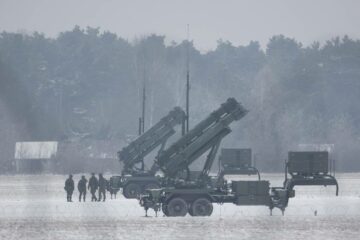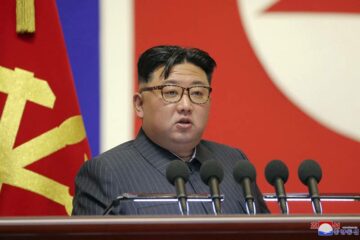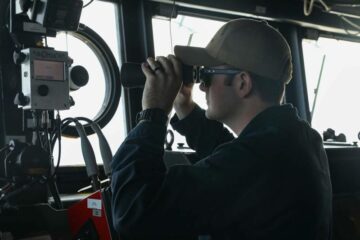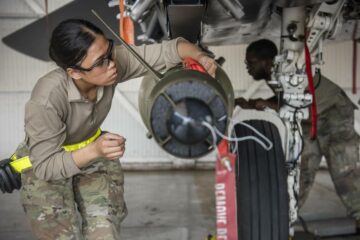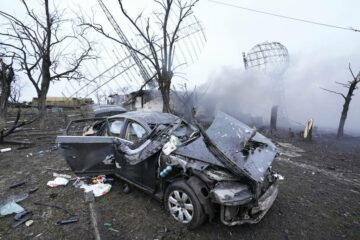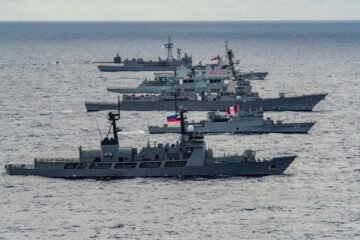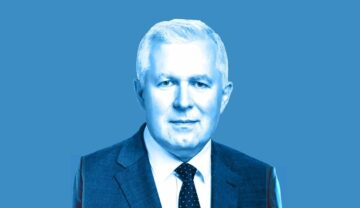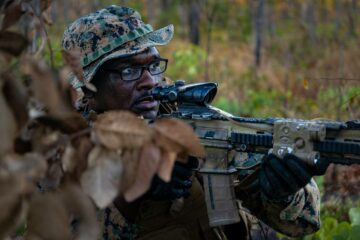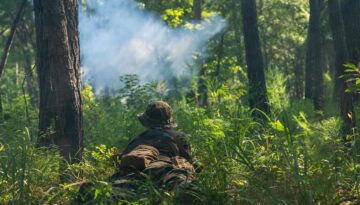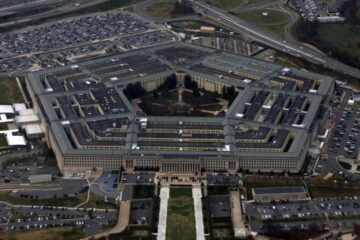
Climate change. The COVID-19 pandemic. Food insecurity. And of course, Russia’s invasion of Ukraine.
All have taken a toll on the global economy, creating ripple effects for the defense industry and its labor force.
How to cope with this volatile economy is a key focus for the participants in this year’s Outlook project.
This edition, which offers forecasts for 2023 from representatives across the globe, differs from our previous approach. You’ll still hear from government and military leaders, industry executives, and analysts, but the essays are now accompanied by one-on-one interviews, forward-looking articles and infographics.
The writers are concerned about a range of topics — from inflation to defense budgets to supply chain security — and they discuss how to solve these issues.
Yuriy Sak, an adviser to Ukraine’s defense minister, talked about the future of the war-torn nation’s defense industry when Russia’s invasion ends.
Meanwhile, Poland’s defense minister is determined to exceed NATO’s target — that each alliance member spend at least 2% of their gross domestic product on defense — as a way for the country to modernize its armed forces.
Poland’s recent spending spree included deals for South Korean systems (FA-50 fighter jets, K2 Black Panther tanks, K9 Thunder howitzers, K10 resupply vehicles and K239 Chunmoo multiple-rocket launchers), and the European nation leased a set of MQ-9A Reaper drones from American company General Atomics.
For the U.S. Navy’s top civilian, Carlos Del Toro, economics and national security go hand in hand. This, he said, will come in the form of supporting allies and partners abroad, deterring China from trespassing on exclusive economic zones, and addressing quality-of-life issues for service members amid rising inflation.
And on the issue of sustainability, Amentum CEO John Heller warned of a “perfect storm” that the world can still fight off through investments in energy efficiency.
Our reporting in this Outlook edition speaks to each domain of warfare: The U.S. Air Force is getting a new bomber, and that means changes are coming to the service’s existing fleet. The U.S. Army is moving toward another phase as it seeks to replace the Bradley infantry fighting vehicle. The U.S. Navy’s secretive Project Overmatch is headed for deployment at sea. Plus, America’s dominance in space was no easy task, as seen through the lens of the Space Development Agency; and there’s more to be done.
Meanwhile, artificial intelligence and quantum computing are among NATO’s top acquisition priorities for the new year.
So what to expect in 2023?
If last month’s G20 summit — a meeting of some of the world’s largest economies — is any indication, count on more transitions to clean energy, efforts to recover from the coronavirus and updates to agricultural trade rules.
And consider the summit’s final declaration, which said “most members strongly condemned” Russia’s invasion of Ukraine.
That ongoing divergence of opinion over a war — one that triggered sanctions, higher food prices and a ramp-up of defense production — will likely further roil the global economy for the year to come.
Chris Martin is the managing editor for Defense News. His interests include Sino-U.S. affairs, cybersecurity, foreign policy and his yorkie Willow.
- SEO Powered Content & PR Distribution. Get Amplified Today.
- Platoblockchain. Web3 Metaverse Intelligence. Knowledge Amplified. Access Here.
- Source: https://www.defensenews.com/outlook/2022/12/05/global-leaders-fixate-on-warfare-and-economic-stability/
- 2%
- 70
- 9
- a
- About
- acquisition
- across
- addressing
- agency
- Agricultural
- AIR
- Air Force
- Alliance
- American
- Amid
- among
- Analysts
- and
- Another
- armed
- Army
- articles
- Black
- Budgets
- ceo
- chain
- change
- Changes
- China
- come
- coming
- company
- computing
- concerned
- Consider
- country
- course
- COVID-19
- COVID-19 pandemic
- Creating
- Cybersecurity
- Deals
- Defense
- deployment
- determined
- Development
- discuss
- Divergence
- domain
- Domestic
- Dominance
- Drones
- each
- Economic
- Economics
- economies
- economy
- edition
- editor
- effects
- efficiency
- efforts
- ends
- energy
- European
- exceed
- Exclusive
- executives
- existing
- expect
- fight
- fighting
- final
- FLEET
- Focus
- food
- Force
- Forces
- foreign
- foreign policy
- form
- forward-looking
- from
- further
- future
- G20
- General
- getting
- Global
- Global economy
- globe
- Go
- Government
- gross
- headed
- higher
- How
- How To
- HTTPS
- images
- in
- include
- included
- industry
- inflation
- interests
- Interviews
- invasion
- Investments
- issue
- issues
- IT
- John
- Key
- Korean
- labor
- largest
- Last
- leaders
- likely
- managing
- Martin
- means
- meeting
- member
- Members
- Military
- modernize
- more
- moving
- nation
- National
- national security
- Nations
- New
- new year
- news
- Offers
- ONE
- ongoing
- Opinion
- Outlook
- pandemic
- participants
- partners
- phase
- plato
- Plato Data Intelligence
- PlatoData
- plus
- policy
- Product
- Production
- project
- Quantum
- quantum computing
- range
- recent
- Recover
- replace
- Reporting
- Representatives
- Ripple
- rising
- rules
- Said
- Sanctions
- SEA
- security
- Seeks
- service
- set
- SOLVE
- some
- Space
- Speaks
- spend
- Stability
- Still
- strongly
- Summit
- supply
- supply chain
- Supporting
- Sustainability
- Tanks
- Target
- Task
- The
- the world
- their
- Through
- to
- top
- Topics
- toward
- trade
- transitions
- triggered
- u.s.
- Ukraine
- Ukraines
- Updates
- vehicle
- Vehicles
- volatile
- war
- What
- which
- will
- world
- world’s
- year
- zephyrnet
- zones


